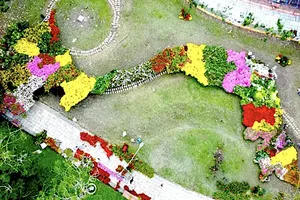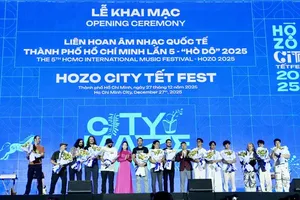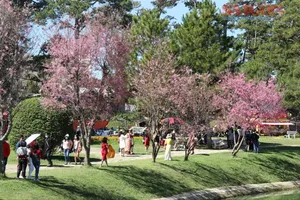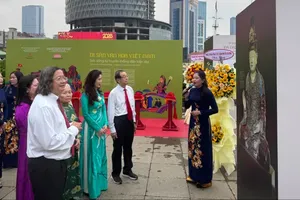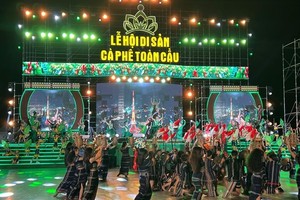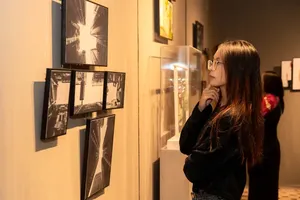These craftsmen meticulously perfect each stage of the lantern-making process to ensure that every generation can cherish beautiful memories of golden moonlit nights with traditional, brightly colored lanterns.
Seven years of reviving traditional lanterns
In the traditional craft village of Phu Binh (located on the border of District 11 and Tan Phu District, Ho Chi Minh City), artisans have been working tirelessly day and night, crafting thousands of colored-cellophane paper lanterns. Initial preparations for the lantern-making process begin around the Lunar New Year to ensure they can fulfill large orders nationwide for the Mid-Autumn Festival.
The older artisans here largely inherited their craft from many generations, tracing their roots back to the renowned lantern-making village of Bao Dap in Nam Dinh. They brought with them the intricate designs of traditional lanterns when they moved South. However, during the 1940s and 1950s, wartime and difficult living conditions disrupted material supply, leading to the loss of many traditional lantern designs.
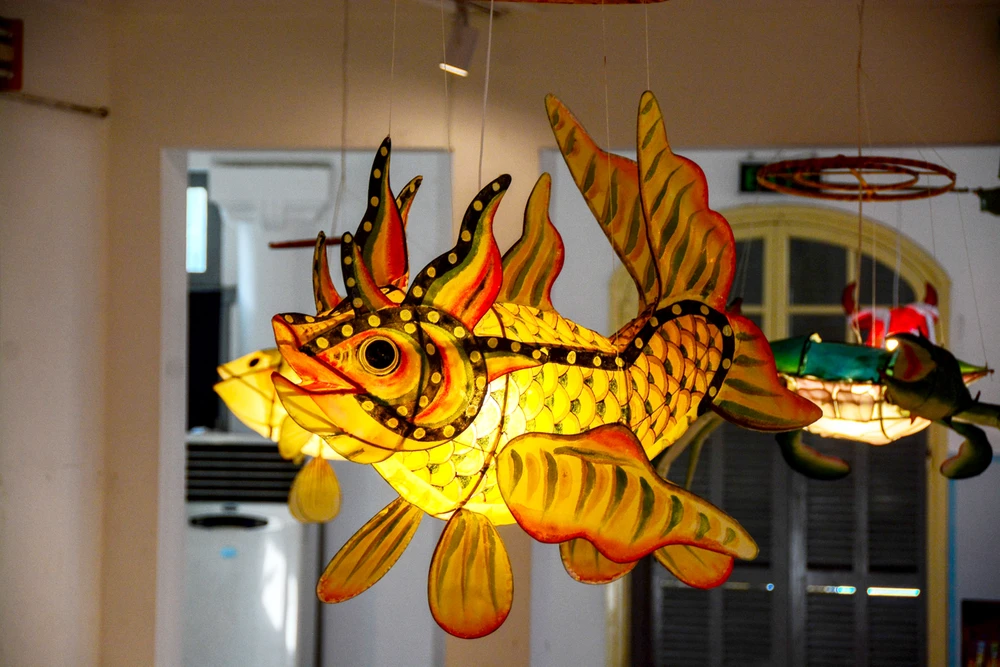
The ancient lantern designs from Bao Dap Village were once displayed in a museum in Hanoi, but now only photographs remain to preserve the memory of these old lanterns. Driven by a desire to revive the lanterns he cherished as a child, cultural researcher Trinh Bach has traveled everywhere with just a few faded black-and-white photographs and sketches as his references.
Someone suggested that he visit Phu Binh Village for further inquiries. At first, local artisans refused, but he eventually connected with the family of artisan Nguyen Trong Van, who comes from Bao Dap Village and has over 60 years of experience in lantern-making. Despite his advanced age, Van, driven by his love for traditional craftsmanship, agreed to collaborate with his children and researcher Trinh Bach to revive these ancient lantern designs.
"Traditional lanterns are incredibly intricate and detailed, and they must be made with 100 percent accuracy to honor the designs of our ancestors. We had no knowledge of the techniques or materials used back then, and we only had a few photographs from different angles. We had to experiment with each component, discarding countless attempts and starting over. It requires a lot of time, precision, and expense," explained Nguyen Trong Thanh, 57, son of artisan Nguyen Trong Van.
Restoring just one traditional lantern took several years of dedication. For example, recreating the crab lantern alone required a year to craft the bamboo frame, with each of the eight legs and two claws needing to be flexible yet sturdy. The process of applying the silk covering was equally meticulous, as it involved determining the adhesive used by past artisans to ensure it lasted 5-10 years and achieved the most vibrant colors. Many materials that seemed similar to those used in the past turned out to be different. Similarly, perfecting the red crab design (boiled crab) took over a year before they began work on the green crab design (live crab).
Researcher Trinh Bach had to stay in Ho Chi Minh City, using his memory to guide the artisans since the reference photos were in black and white and did not show the colors. The final stage involved decorating the lantern, including adding eyes, and fur, applying paper details, and spraying with gloss to make the lantern shine when lit and ensure its longevity. The internal light must be a large candle in a bowl, carefully positioned for even illumination. For the crab lantern alone, Mr. Trinh Bach and the artisans persevered for three years before they were satisfied with the result and ready for display.
Over approximately seven years (from 2017 to 2023), the researcher and artisans managed to restore eight out of ten traditional lantern designs, including the carp-turning-into-dragon, carp fish, live and boiled crabs, the Three Gods (peach, pomegranate, Buddha's hand), and garlic. "The more we work on these lanterns, the more we admire our ancestors' skills in crafting such intricate designs despite difficult times. This has strengthened our appreciation and commitment to restoring them," said artisan Nguyen Trong Thanh.
A devotion to traditional lanterns
During the Mid-Autumn Festival, though busy with numerous lantern orders, the artisans of Phu Binh Village cannot help but feel nostalgic. It’s not just about reviving traditional lanterns; even the simpler glass paper lanterns that children play with today have gone through many ups and downs. In 2004, when electronic lanterns flooded the market, colored-cellophane paper lanterns seemed to be fading away. Nguyen Trong Van’s family, despite some members being elderly, had to find other ways to make a living. But nine years later, old distributors unexpectedly returned, encouraging the family to start again. Thanh shared, “They valued our craftsmanship and the quality we were known for, assuring us they’d take everything we made. We missed the traditional lanterns passed down from our parents, so we decided to continue the craft."
However, times had changed, and the family could not continue making lanterns the old-fashioned way. They began to innovate, focusing on practical improvements like making collapsible lanterns for easier bulk transport while ensuring customers could easily assemble them at home. They also worked on enhancing paint durability and experimenting with color schemes so the lanterns would appear bright even without a candle inside. Once lit, the lanterns had to shine evenly and sparkle, drawing attention from afar. Gradually, other lantern makers in the village began adding unique touches to their products. Even with familiar designs like fish or rabbit lanterns selling for only tens of thousands of Vietnamese dong, each household developed distinct painting styles and frame-making techniques, creating a rich diversity in the lantern market.
"This is our craft, and for it to endure and thrive, we must constantly improve our skills, innovate, and take on more challenging, intricate designs. We can't just keep repeating the same simple lantern designs," shared artisan Nguyen Trong Binh, 47, son of artisan Nguyen Trong Van.
At the Hue Lantern Festival, held at the Imperial Household Department in the Imperial City of Hue, the family of artisan Nguyen Trong Van presented ten newly crafted lanterns made from colored-cellophane paper and silk, depending on display requirements. These designs, inspired by the traditional Bao Dap Village lanterns, were reimagined with a modern twist. "These pieces, showcased in museums, are not made for commercial purposes. We fund this work through the sales of popular colored-cellophane paper lanterns. However, they must still be crafted meticulously so future generations can understand the beauty of our traditional lanterns," said artisan Nguyen Trong Binh.
